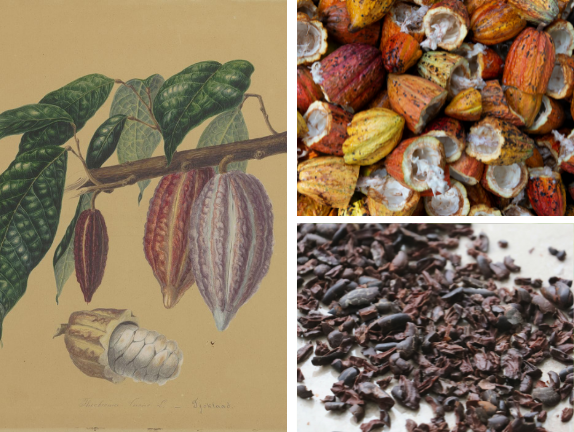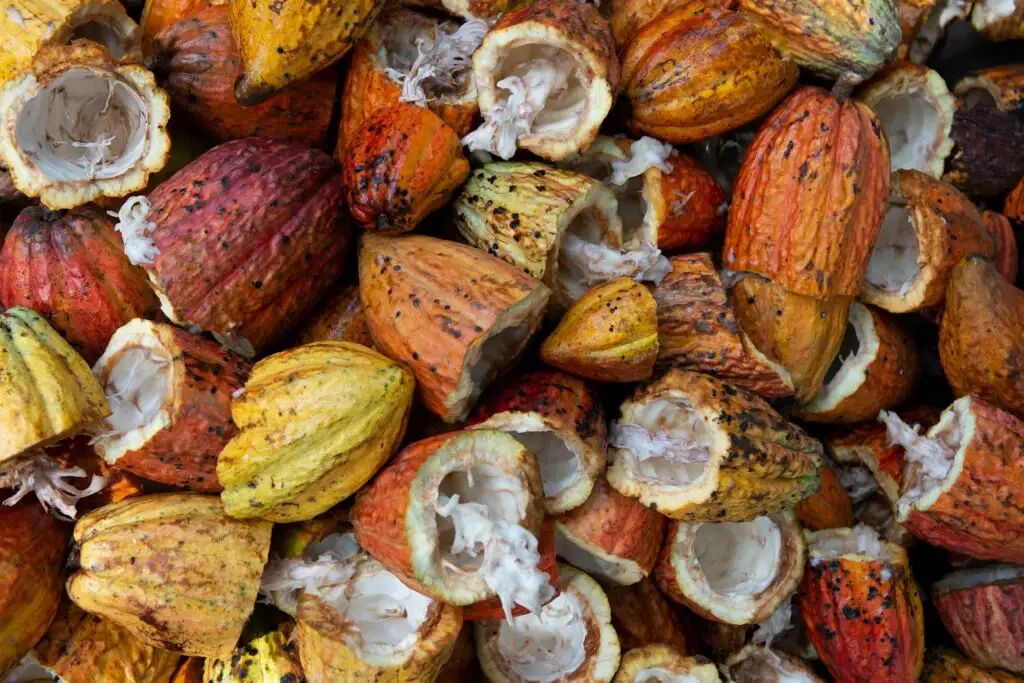Theobroma cacao
Latin Name: Theobroma cacao
Herb Class/Action: nervine, cardio-bitter, nutritive, antioxidant, digestive bitter and astringent
Parts Used: seed (bean)
Flavors: bitter
Energetics: mildly cooling, drying
Traditional Benefits: mood and spirit lifting, central nervous system support, supports a healthy inflammatory response, supports a healthy bronchial response
As an all encompassing digestive, respiratory, and cardiac bitter, Cacao invigorates and fortifies the spirit, clears heat from the heart-mind, and maintains healthy blood flow. Traditionally used to ‘open the heart,’ this medicinal food and herb promotes connection and creativity by supporting the smooth flow of Qi.*
Don’t get me wrong—we love a good bar of dark chocolate (or two), but the sacred Cacao plant is actually a potent, medicinal tool that has much more to offer than helping with PMS cravings and a mood boost. The Cacao plant has been harvested for its seeds (beans) and used ceremoniously for centuries, dating back to Mayan Medicine during the Aztec Empire.
When consumed for therapeutic and ceremonial purposes, Cacao is prepared as a rich beverage: warm, unsweetened, and non-alkalized. Because Cacao naturally contains low levels of caffeine and heightens creativity while opening the heart, it’s consumed in modern times as a stimulating and mind expanding morning beverage, in lieu of tea or coffee.

One of the most noticeable benefits of Cacao would be its mood-enhancing properties. You know how drinking a warm cup of hot cocoa or eating a few pieces of a chocolate bar is an instant little pick-me-up? While sugar may be playing a factor, it’s more likely the cacao content. Cacao contains anandamide, which is said to supports feelings of excitement and alertness—as well as phenethylamine (PEA), which acts upon the endocannabinoid system, triggering the release of endorphins and neurochemicals (the same kind released when we fall in love). It’s also known to support healthy levels of serotonin in the brain.*
We love plants that offer both in-the-moment and long-term benefits, and Cacao definitely checks these boxes. As a stimulating and balancing bitter herb, Cacao helps to open the channels of the body; not just the heart, but the heart-mind or our “spirit,” perception and creativity. This herb is uniquely able to lift the mood with its moving and dispersing alkaloids and tannins that dredge up stagnant Liver Qi and get stagnant emotions flowing. Similar to coffee, this plant medicine is useful for those who need a “spirit lift” in the morning.
Physically, the action responsible for this effect may be the way Cacao supports healthy blood flow to the brain, supporting the circulatory system and heart. Cacao acts on our digestion as well, supporting the normal, healthy breakdown and assimilation of the nutrients we receive through food. This medicinal food is supportive to the health of the mucosal lining in the gut, and rich in flavonoids and polyphenols that enrich microbiome balance.*
As a “bitter,” Cacao goes far beyond the cut – along with being a “digestive bitter,” it’s also considered a “respiratory bitter,” supporting a healthy bronchial response within the airways. As mentioned in the context of the heart, this plant is lastly a “cardiac bitter,” clearing “heat” from the heart and heart-mind, supporting metabolic health and maintaining healthy cholesterol/blood pressure levels.*
When you think of antioxidants, you might think of berries, cherries, or green tea. But did you know that cacao contains an impressively high phenolic content, giving it one of the strongest antioxidant makeups of all tested foods? Antioxidants are extremely beneficial in helping protect us from free radical damage caused by pollution, toxins, and stress.*
The last Aztec Emperor Montezuma was recorded to tell Hernan Cortes in 1519 that cacao is a “divine drink, which builds up resistance and fights fatigue. A cup of this precious drink permits a man to walk for a
whole day without food.”

